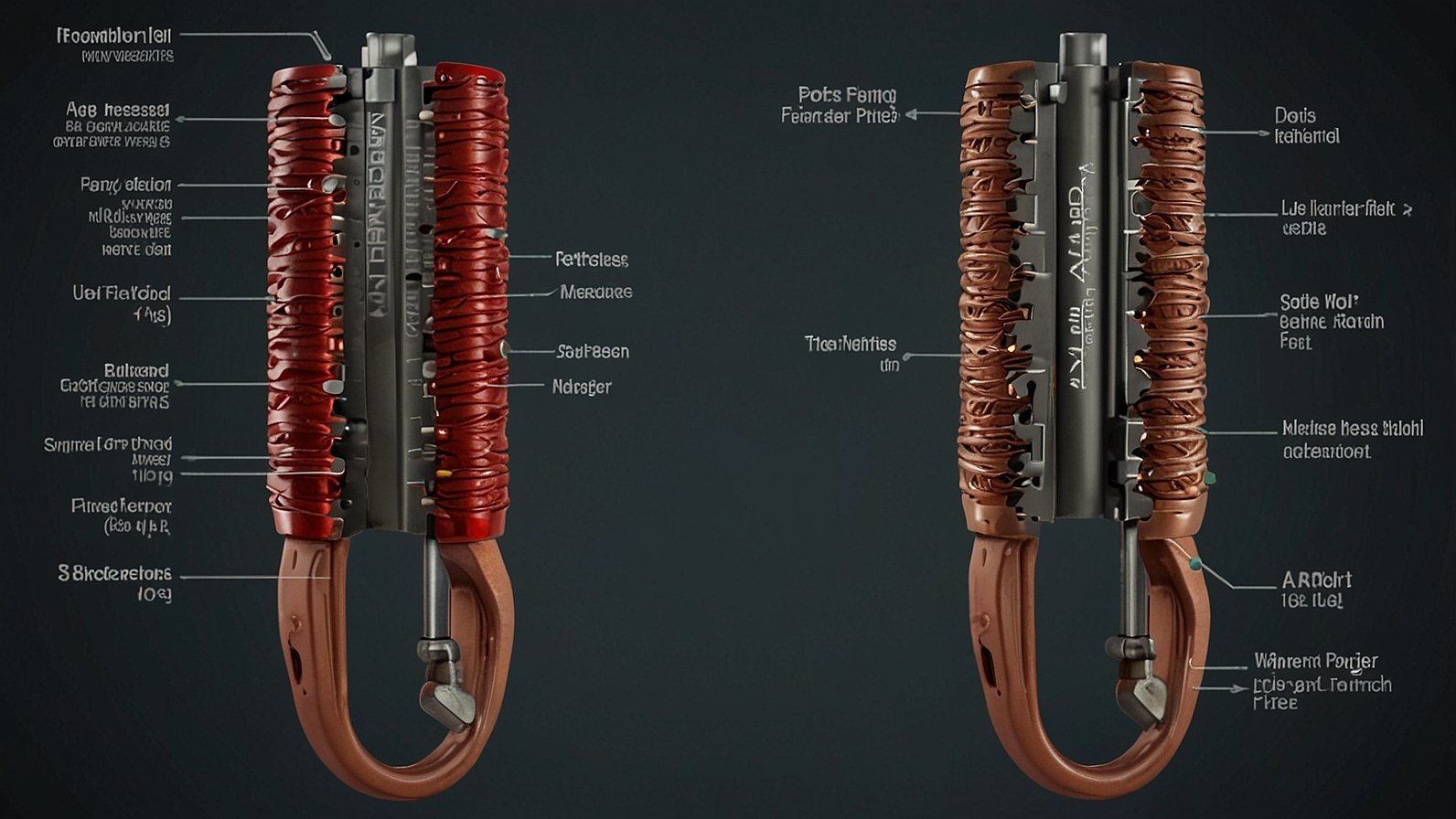Alright, let’s get those creative juices flowing. You’re not just filling a page with words; you’re building a bridge between a complex technical product and the person who desperately needs it. Your mission is to take something as specific as the spring ferraz a-102914 right and turn it into a helpful, engaging, and trustworthy resource. Let’s break down exactly how to do that.
Staring at a machine downed by a failed spring and wondering if that aftermarket part you found online is the right fix? You’re not alone. Sourcing a specific component like the spring ferraz a-102914 right can feel like a high-stakes gamble. This article will be your guide to navigating the replacement maze with confidence, ensuring you get the perfect fit without the guesswork.
What Exactly is the Spring Ferraz A-102914 Right?
In essence, it’s a right-hand wound replacement spring, often listed as a compatible part for machines originally equipped with components from the Ferraz family. It’s not necessarily an original OEM part but an aftermarket solution designed to meet specific mechanical specifications.
The Critical Importance of ‘Right-Hand Wound’
This isn’t just a minor detail—it’s a fundamental design characteristic. The winding direction determines how the spring interacts with the mechanism. Installing the wrong type can lead to binding, rapid wear, or complete failure.
For absolute clarity, here’s a breakdown:
| Feature | Left-Hand Wound Spring | Right-Hand Wound Spring (e.g., A-102914) |
|---|---|---|
| Coil Direction | Coils ascend counter-clockwise | Coils ascend clockwise |
| Application | Specific to machines designed for LH wind | Specific to machines designed for RH wind |
| Interchangeability | Not Interchangeable | Must match OEM specification |
The Aftermarket Maze: Navigating Compatibility and Risk
Contrary to popular belief, an aftermarket part with a matching number isn’t always a plug-and-play solution. The part number is a starting point, not a guarantee.
Why is verification so crucial? Furthermore, a tiny deviation in material specs (e.g., music wire vs. stainless steel), load capacity, or compression length can turn a simple repair into a recurring headache or a safety hazard.
Imagine buying a heart valve based only on the name ‘Valve Model X.’ You’d demand exact specifications and a surgeon’s confirmation. Your machinery deserves the same level of care. Therefore, trusting the vendor’s word without your own due diligence is a risk you can’t afford.
Your Step-by-Step Guide to Safe Sourcing
This is where we move from theory to action. Follow these steps to ensure you get a part that works, not one that creates more problems.
- Identify the OEM Manual: This is your bible. Dig out the original documentation for your machine and find the exact spring specifications listed by the manufacturer. This is your gold standard.
- Cross-Reference Carefully: Compare the listed specs for the Ferraz A-102914 (load, dimensions, wind direction) against your OEM requirements. Don’t just match the number; match the physics.
- Consult an Authorized Distributor: For instance, reach out to trusted suppliers like Motion Industries or Applied Industrial Technologies. Their technical support teams have direct access to data and can often provide certification of conformity.
- Inspect Upon Arrival: Before installation, physically measure the new spring against your old one and the OEM specs. Check the wire diameter, outer diameter, free length, and, of course, the winding direction.
Finding Your Voice & Style: Be the Expert Friend
So, you’ve found the part number. Now what? Let’s walk through the verification process together.
You might be asking, ‘Is this really necessary?’ In a word, yes. The cost of a few minutes of verification is tiny compared to the cost of catastrophic machine failure and unplanned downtime.
Take, for example, a manufacturing plant in Ohio—let’s call them ‘Great Lakes Assemblers.’ They avoided a 24-hour production halt by double-checking the load rating on a similar spring before installation. That five-minute check saved them thousands.
Wrapping It Up: Conclusion and Reader Engagement
Sourcing the correct spring ferraz a-102914 right isn’t about finding a part—it’s about guaranteeing performance and safety. By prioritizing exact verification over assumed compatibility, you protect your equipment, your productivity, and your bottom line.
Next Steps: 3 Tips to Try Today:
- Locate Your Manual: If you haven’t already, find your OEM documentation now.
- Bookmark a Distributor: Identify two authorized distributors with solid tech support teams.
- Measure Your Old Spring: Before you toss the failed part, record its key dimensions and wind direction.
We’d love to hear from you: What’s the biggest challenge you’ve faced when sourcing a replacement component?
You May Also Read: How Businesses Can Streamline Operations With a Virtual Assistant Staffing Agency
FAQs
Is the Ferraz A-102914 spring an original OEM part?
Not necessarily. It is most commonly an aftermarket part listed as compatible with OEM systems that use Ferraz-style components. Always verify against your original specs.
What happens if I install a left-hand wound spring instead of a right-hand one?
It can lead to improper function, rapid wear, spring failure, and potentially dangerous machine malfunction. The winding direction is critical to the spring’s operation within the assembly.
Where is the best place to buy a verified spring?
The safest route is through an authorized distributor or directly from the OEM. They can provide technical data sheets and confirm the component meets all necessary specifications.
Can I just measure the old spring to get the right replacement?
Measuring is a crucial first step, but it’s not always enough. Material composition, load rating, and heat treatment are invisible specs that also must match. Use physical dimensions as one part of your verification process.
How critical is the ‘right-hand wound’ specification?
Extremely critical. It is a non-negotiable design element of the assembly it belongs to. Using the incorrect wind direction is like trying to force a left-handed thread onto a right-handed bolt.










